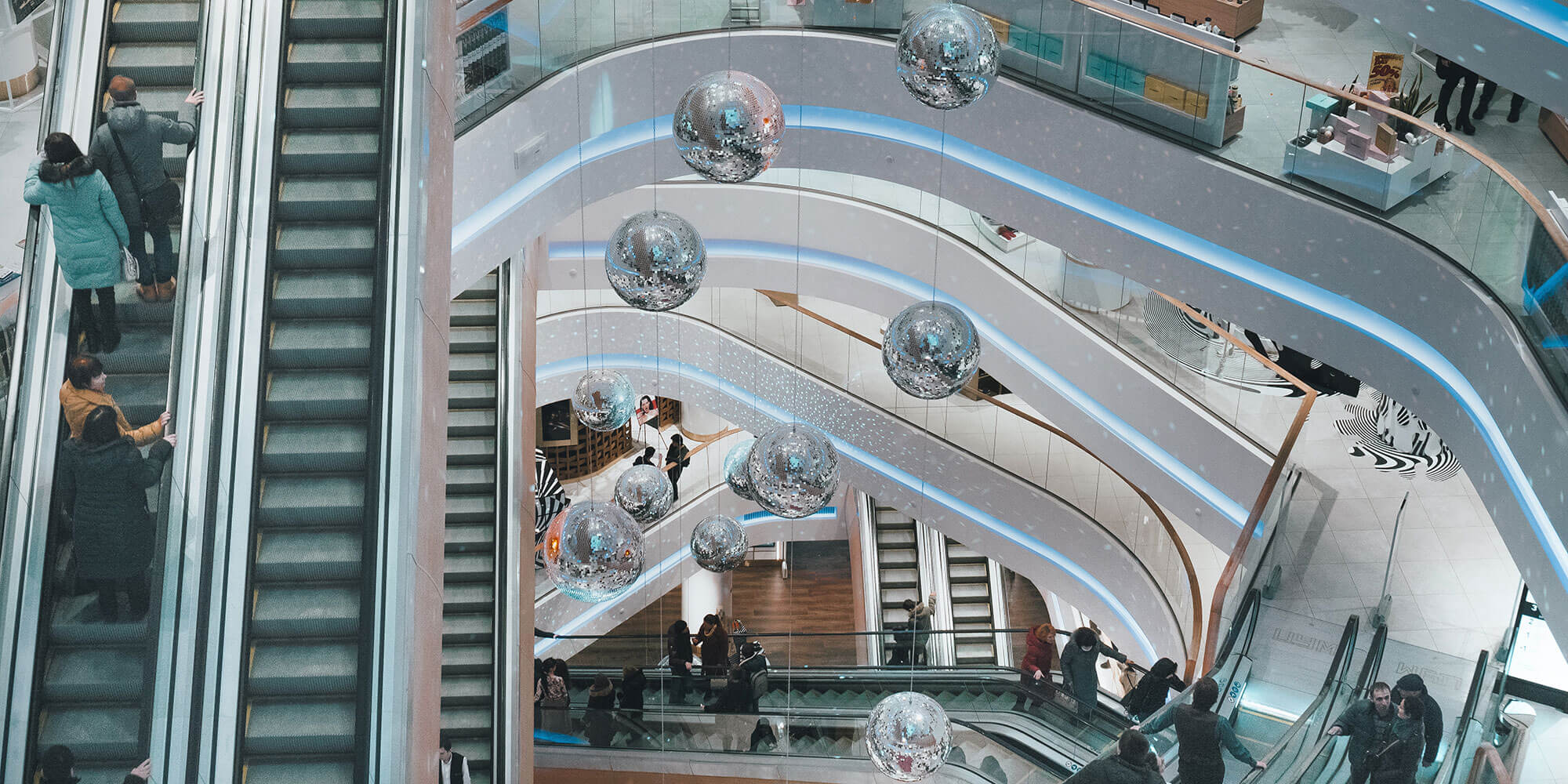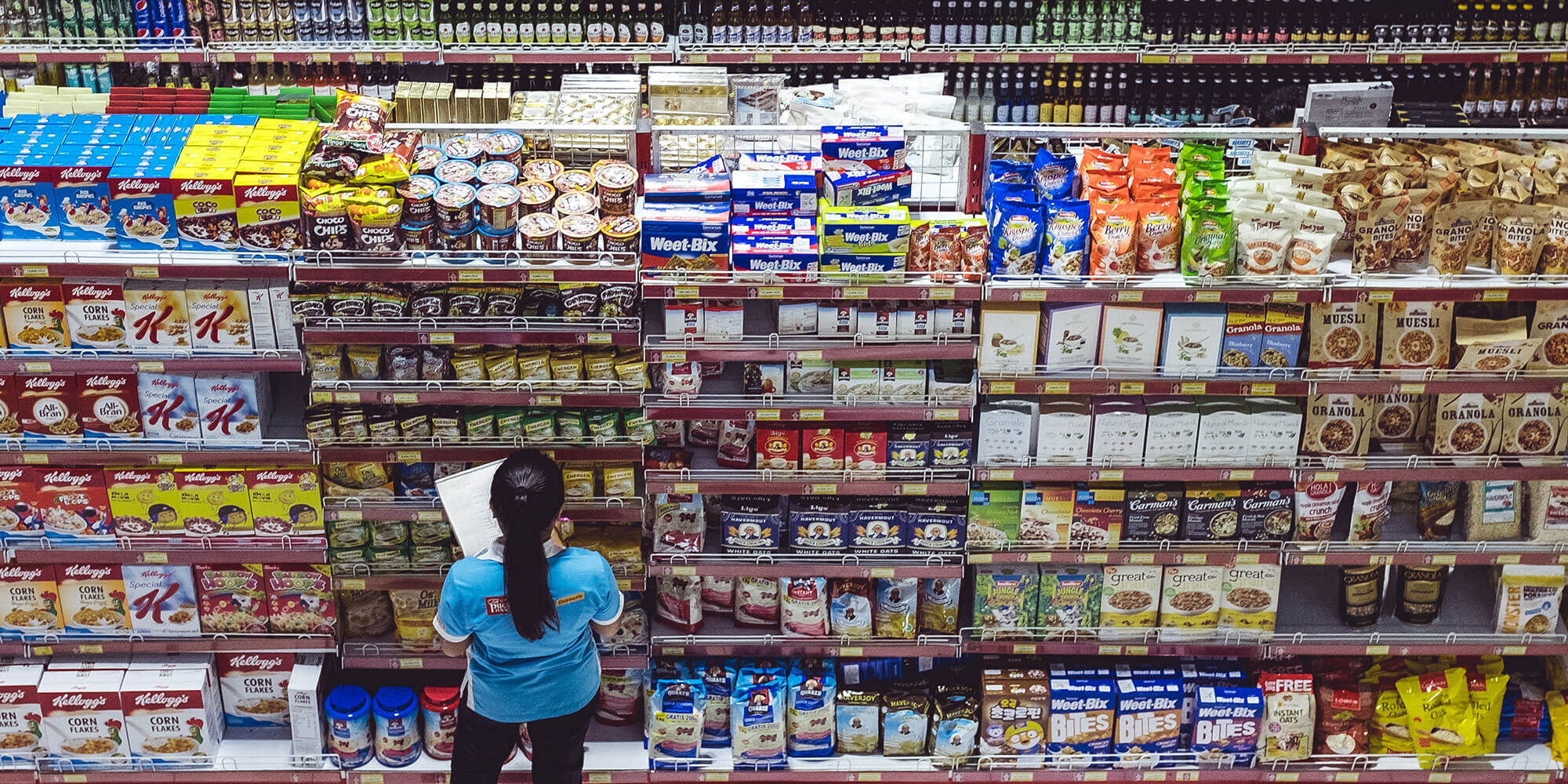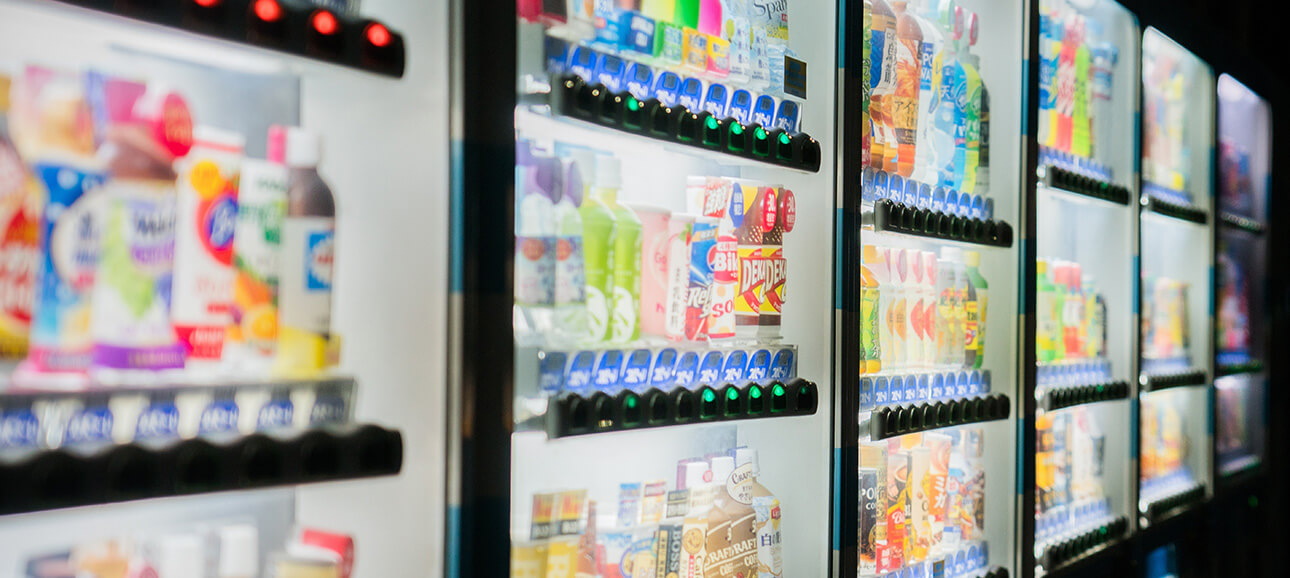Retail IoT Solutions and Cloud Connectivity


IoT is growing in popularity every day as more and more businesses experiment with the technology in their respective industries. In fact, a report from the McKinsey Global Institute estimates that IoT could have an annual economic impact between $4 trillion and $11 trillion by as early as 2025.
In the retail industry, IoT and cloud technology are helping to improve prediction, precision and production in stores, warehouses and businesses.
Remote monitoring, improved production and reduced waste are just a few benefits that IoT technology can provide to businesses and their projects.
Being able to track and finalize a consumer’s purchases in a retail environment, as well as their product history and specific demographics, without needing a cashier provides retail consumers with heightened convenience. Plus, it benefits retailers through lower labor costs and an improved understanding of their audience.
Similarly, retail operations can benefit from the ability to remotely monitor and manage surveillance and security within their stores. Rather than paying for a security system or an employee to guard their storefront, retailers can monitor their own surveillance system with the help of IoT-connected security devices individually, or share the responsibilities with a trusted group.
IoT connected sensors can be used to monitor and predict equipment for sub-optimal performance or technical failures.
This is especially important in a retail environment where equipment such as refrigerated units and POS systems are often heavily counted on for business operations. Knowing when a piece of retail equipment needs maintenance saves retailers on the potential cost of faulty equipment, lost consumers and mismanaged operations.
Supply chain logistics and procurement processes are an integral part of business for retailers. With IoT technology, retailers can manage their operations with an unprecedented level of precision and efficiency. IoT technology enables retailers to track the resources that they’re using, as well as the ones that they’ve purchased, such as shipments.
Not only does this provide a near-perfect recollection and recording for financial audits, but it also better informs budget decisions, with the potential to save money that retailers can spend elsewhere.
And once IoT technology locates all of the products and resources in a retailer’s supply chain, connected sensors can be used to ensure that a retailer’s resources aren’t being unnecessarily wasted as a result of poor management.
Placing an IoT sensor in refrigerated units can alert users when temperatures have reached critical level for food or drink contamination. Considering the amount of product that can be stored in a given storage unit, this could significantly cut retailers’ expenses over a long period of time.
IoT essentially connects machines and other devices with people and services. It allows individuals and businesses to harness operational data in real time, successfully analyze it, and use it to their advantage.
IoT-connected sensors collecting data on temperature and energy usage can report the information they collect back to the cloud, where it can be accessed from anywhere in the world.
From that information, retailers can predict and analyze the data at an unprecedented level, all with the potential to improve production and reduce waste. Plus, this data could inform other connected devices on the retailer’s network, instilling further intelligence into the IoT system.
For example, an IoT sensor can detect when a refrigerated unit has seen a temperature increase. This sensor could send the status update to a connected equipment management system, which alerts users to the specific unit’s problem.
IoT technology enables retailers to empower the equipment and services that work for them and streamline the connection and collaboration of the IoT devices with one another, as well as with the people who operate and maintain them.
And the result of this is streamlined operations, lower costs, and above all, an improved retail consumer experience.
One of the key technologies that has empowered IoT to innovate operations and spread across industries such as retail is the cloud. In the past, interacting with large pools of data required massive processing power and memory storage, the likes of which were often only owned by large corporations.
This placed a high barrier to entry on experimenting with big data and, as a result, performing predictive analysis on operations and procedures.
With cloud technology, all of these processes are essentially done using the resources of the internet, rather than a computer’s hard drive or processor.
This enables anyone and everyone to not only access large pools of data to better inform them of their operations, but also invites anyone and everyone to experiment with the technology, shaping it for their specific needs as a consumer or as a business.
Retailers can gain a lot of this data, as it could be used to better inform their marketing and sales tactics, as well as their operational budget. Knowing more about consumers can help retailers build their store to fit their audience’s specific needs, providing a better strategy for sales while improving the convenience and journey of the retail consumer.
Together, IoT and cloud technology are being used in the retail industry, among others, to create a new, intelligent system that benefits all parties.
IoT Technology and Smart Retail
According to a new report, the global IoT investment in the retail market is expected to reach $94.4 billion USD by 2025.
Considering the countless components that make up the retail market, IoT technology can have numerous applications in smart retail, from reducing capital expenses and boosting profits, to improving the consumer experience and predicting equipment malfunctions.
Nonetheless, all of these IoT applications make for an optimized and productive future for smart retail.

Improved Retail Consumer Experience with IoT Technology
IoT, cloud and other technologies have enabled physical brick-and-mortar retail operations to merge with the processes of e-retail to create a more comprehensive and inclusive consumer experience.
Most of this retail interest stems from an increased demand for enhanced consumer experience, improved operational flexibility and additional distribution channels.
Around 78 percent of retailers consider it “business critical” to combine their online and in-store experiences to create a comprehensive retail journey for their consumers.
Omni-channel marketing and retail, along with the prevalence of smartphones, have enabled retailers to create an experience within their physical stores, using in-store promotions and social media interaction.
IoT technology can take the guesswork out of marketing to consumers as they walk into a store or land on a website.
Knowing more about them, retailers can personalize the consumers’ experience to their needs and interests, improving the convenience and efficiency of their shopping, and resultively, the profits of retailers.
IoT sensors can also be used to track how many customers enter a retail store on a given day, week or month. It can even locate the footpath that consumers are taking to reach the store.
Using this information, collected by IoT technology, in tandem with neighborhood demographics or advertising strategy can boost the impact of retailers’ marketing and sales efforts
Coop Italia, Italy’s largest grocery cooperative, recently showcased an IoT-inspired retail design using IoT technology.
Sensors monitor retail shoppers as they move through the store, and interact with them as they approach product shelves. These IoT-connected sensors provide digital information about the product in question, including nutrition information, carbon footprint, and even food or wine pairings. When retail consumers check out, they purchase their goods using digital cash registers.
On the operation side, Coop Italia’s IoT system monitors inventory so the store doesn’t unknowingly run out of stock, while tracking customer analytics and interests for marketing and sales purposes.
This boosts profits on multiple fronts: it helps retailers manage their products to prevent unnecessary waste, ensures consumers aren’t frustrated at retailers being out of stock, and provides an automated collection of retail consumer data for future analytics.
All of the data collected by the IoT sensors is stored on cloud-based platforms.
During Coop Italia’s six-month trial at Expo Milan, almost two million people visited the store, providing significant retail consumer insights and analytics that can be seamlessly integrated into future retail store plans.
Employ Smart Retail Price Tags with IoT Technology
Intelligent retail price tags are another way that IoT is revolutionizing the retail industry.
Instead of estimating a price point and checking in after a month or two to see whether or not it’s working for the market, these intelligent price tags offer retailers real-time sales analytics. And since they can be remotely altered, retailers can also save on the direct labor costs associated with manual price changes.
Retailers testing new products or offering a new promotion can immediately pivot on their pricing if necessary, avoiding potential capital loss as a result of poor sales strategy. Plus, the information that is gathered from the intelligent price tags can inform future retail sales models for the retailer, or for similar retailers.
In this sense, combining IoT technology with cloud technology provides retailers with exceptional consumer data storage, remote management and predictive data for their store operations.
German furniture discounter Poco has been using electronic shelf label (ESL) technology for over a year now, and has seen great results on many fronts. With over 10 million price changes a year, Poco implemented the ESL system with the hopes of simplifying retail operations.
“Compared to manual paper labeling, this system has made our pricing and tagging processes much quicker and it allows us to change prices several times a day. It also adds a high degree of reliability, ensuring that the right prices are on the product at the right time since the process is fully automated,” explains Sebastian Schrader, Poco’s Head of Organization.
ESL technology has an impact on more than just pricing. Using different colors as well as graphics can inform retail associates whether or not an item is on sale, needs restocking, or how it has performed at a certain price point.
This IoT-connected system could be analyzed to better understand supply chain management, shipping logistics and customer behavior in the retail industry. And from the consumer’s perspective, the convenience is something that can’t be understated.
“The system behind ESL generates error logs of incorrect prices. Meanwhile, with paper labels, you don’t notice that something went wrong until the customer is already at the checkout. You can’t put a price tag on preventing long wait times at the checkout,” explained Kai-Uwe Jensen, Sales Manager at Delfi Technologies, Poco’s ESL provider.
By the end of 2018, Kroger will be introducing their own IoT-connected smart shelves in 200 stores. Not only will the technology allow remote pricing changes, but it will also connect with smartphones to provide nutrition, allergy information, and recommendations based on consumer interests.

Accurate Retail Inventory Management with IoT Technology
One particular facet of IoT technology that is seeing use across multiple industries is inventory monitoring and transparency.
A recent study found that 72% of retailers plan to reinvent their supply chain with IoT automation, sensors and analytics. The same study found almost 96% of retail decision makers are ready to adopt IoT in their operations.
IoT-connected sensors can alert users when stock levels are too low. This ensures that product shipping and supply chain management are properly timed, avoiding product waste or other unnecessary costs.
With IoT technology, businesses can know the exact quantity of their order, the exact time that it will arrive and the exact space that they have available in their warehouse. This makes it less likely that shipments will be racking up fees in a harbor while businesses rush to clear room in their warehouse.
IoT can also improve the consumer experience by having accurate product inventory information. When a consumer checks online to see if the product they want to purchase is in stock, it won’t be a guessing game in-store with the potential of a negative customer experience.
One way that IoT is significantly impacting retail inventory management is through the emergence of robots in the retail industry.
BI Intelligence predicts that between 2016 and 2021, close to 2.8 million business robots will be put to work. Whether they’re helping retail consumers find what they’re looking for, fixing in-store equipment or stocking shelves, these retail robots have the potential to completely transform the retail industry.
A Silicon Valley startup has already experimented with IoT technology and robotics for retailer Target. Stocking shelves and counting inventory, these retail robots are saving Target time and money that they could spend building their business.
Other retailers have introduced IoT-enabled robots to their operations as well.
Orchard Supply Hardware, a subsidiary of Lowe’s, has employed a robot to help customers retrieve items from their retail store.
Although the long-term potential of these IoT-enabled retail robots isn’t known yet, it’s clear that they can save retailers on labor costs for stocking shelves, managing inventory, fixing equipment, and even communicating with consumers.
Optimized Retail Equipment Maintenance with IoT Technology
From refrigerated units to breaker systems, IoT-connected sensors can monitor and track equipment for technical issues, sub-optimal performance and energy consumption. When problems arise, an alert can be sent out to a device, and the issue could be resolved by either a robotic unit or by a skilled technician.
Employing this in a retail environment can save time on unnecessary routine check-ups, and reduce the cost of an on-site technician or potential stock waste as a result of an equipment failure.
IoT technology has a significant role to play in the retail grocery industry, where equipment is often used to ensure products for human consumption are kept safe.
Refrigerated units stocked with IoT sensors that monitor temperature and air quality can report abnormalities in real time, stopping the supply chain before potentially contaminated food can reach the public. This could drastically limit the product recalls that take place on a daily basis, limiting unnecessary costs while improving people’s quality of life in the process.
IKEA introduced an IoT-powered global facilities management system to its operations in an effort to improve equipment longevity and cut expenses. Using IoT-connected sensors and other devices, IKEA can monitor its assets and use the collected data to predict maintenance and energy trends. With this information, faulty equipment can be replaced before they negatively impact IKEA’s profits, or their customers’ experience.
Pinpoint Retail Transportation Tracking with IoT Technology
Not only can IoT technology track transportation equipment for technical issues or limited performance, it could also optimize transportation routes for speedier delivery.
Commercially and operationally, IoT provides the retail industry with complete and comprehensive visibility for processes and events that were previously unknown.
With this, retailers can know, in real-time, exactly when their shipments will arrive. Plus, with IoT-connected sensors, they can understand more than ever about the status and health of the retail shipments that they are receiving or sending.
This could be knowing what the temperature of a container is, whether it is full or empty, how fast the retail cargo is moving, and more.
Bringing visibility to complex, mixed (air, sea and land) supply chain operations in real-time benefits retail operations even more than asset tracking, and could be what differentiates certain retailers from their competitors.

Retail Customer Profile Analysis with IoT Technology
Knowing more about consumers, whether it be their background or their interests, can help retailers in a variety of different ways. This information can inform how to market to each individual, and can help retailers estimate why they came into the store to begin with.
Parco Corporation, a Japanese department store chain, wanted to perform customer profile analysis on visitors as they entered their store. From this, they could better understand their target market, highlight frequent buyers and improve their overall security at the same time.
Parco needed an IoT solution that was cost-effective, easy to set up, and secure, considering the system would be dealing with personal information.
A cellular connection made the most sense for Parco, as it could efficiently handle the high levels of bandwidth. And considering the size of the department store, their IoT-connected devices needed to have great connectivity if they were to remain reliable. For this, they chose Soracom to provide IoT cellular connectivity.
Parco installed a video surveillance system with Soracom SIM cards, which were used to profile customer segmentation as they entered and left the Japanese department store.
Using SORACOM Air Connectivity Platform, the information that was collected from the surveillance system is sent over a secure cellular connection to the cloud to be stored, ready for analysis.
Simple authentication with AWS services and low cost made Soracom’s IoT cellular solution the perfect match for Parco.
Secure Retail Payments using IoT Technology
Another Japanese department store has chosen Soracom for its IoT project, but for entirely different reasons.
With over 80 stores across the country, Tokyu Hands needed reliable, secure and cost-effective connectivity in their overall operations.
Generally, the network uses a leased line and wide-area Ethernet connection on a closed network. However, Tokyu Hands had difficulty with feeding their large amounts of data through a VPN.
This is why Tokyu Hands decided to replace the backup connection of their POS systems with Soracom cellular connectivity at all of their stores.
Soracom’s private connectivity services via Soracom Canal ensure a safe and secure cellular network connection for Tokyu Hand’s server with near-zero startup cost and VPN-like security. And considering Tokyu Hands only uses a relatively small number of POS units, establishing a cellular connection is far easier (and less expensive) than creating a physical network infrastructure.
With Soracom Air SIM cards, Tokyu Hands’s devices can connect with the server from anywhere at anytime through a consistent and cost-effective cellular connection.
Tokyu Hands took their relationship with Soracom to the next level by employing their IoT cellular connectivity at terminals in Tokyu Plaza, a Japanese shopping center. Previously, these connections would have ranged from tens of thousands of yen to several million, as they required construction, equipment, and certification.
However, Tokyu Hands can achieve private end-to-end cellular connectivity with a Soracom Air SIM card in their devices, running on a Soracom Canal closed network at a fraction of the cost and time of previous methods.
Soracom’s user console and API provide Tokyu Hands with a controllable network configuration. This means that they can remotely start, stop, slow and speed their cellular connections depending on their specific situation.
And without the need to install Wi-Fi access points at each store location, Tokyu Hands can drastically cut their expenses as they grow their retail operations.
Setting up a Soracom cellular connection to your IoT devices doesn’t require any skilled labor or extensive infrastructure. Adding IoT-connected devices is simple and convenient with remote access available on mobile or web browser.
Tokyu Hands plans on using Soracom cellular connectivity to avoid the hassles of VPN in other tasks as well, including the officer’s iPad terminal.
Heightened Retail Efficiency with IoT Technology
While IoT technology can bring reduced operational costs and improved process visibility to retailers, one of the prime advantages that the technology offers to retailers is an improved consumer experience.
With over 280,000 vending machines across Japan, Dydo offers outstanding convenience and quality for both hot and cold beverages.
However, recognizing the potential of IoT technology in the retail beverage industry, Dydo challenged themselves to reach over 100,000 smart IoT connected vending machines in a way that is economical and efficient.
To accomplish this task, Dydo needed an IoT connectivity solution that consisted of a centralized operational and management console to control each device. Plus, they needed to have reliable connectivity and low operational costs.
For their challenge, they decided to power their smart retail beverage machines with Soracom cellular connectivity for their IoT-enabled vending machines..
Cellular connectivity was the ideal solution for their IoT devices because some of their retail beverage machines were in public spaces, away from any WiFi hotspots.
Plus, relying on the connection strength of a building or office unnecessarily puts their devices at risk of faulty or inconsistent connectivity.
And considering Dydo wanted to keep operational costs as low as possible, cellular provided a reliable and secure connection that didn’t require the infrastructure of establishing a separate connectivity for each Dydo retail vending machine.

Soracom Helps Retail IoT Projects Prosper
IoT has the potential to transform countless industries, but it can’t do so without support.
Around 75% of IoT projects end up failing, whether it be for budget costs or poor connectivity. However, more than 80% of companies that adopt IoT technology in their operations report improved efficiency.
For the most part, these results stem from a reduction in maintenance costs and times; an essential part of most business operations.
Sometimes, IoT projects don’t pan out, but the ones that do have significant positive impacts on business operations. That’s why it’s crucial to support IoT projects with the resources that they need.
Connectivity is something that is key to the survival of any IoT project. If IoT devices can’t stay connected, the entire IoT system fails to operate at an optimal level.
Soracom provides IoT projects with the cellular connectivity that keeps them growing and innovating. Over 10,000 customers are powering their IoT projects with Soracom cellular connectivity, positioning themselves to be one of the successful and inspiring stories of IoT success.
And with Soracom’s cost-effective pay-as-you-go model, experimenting with IoT technology doesn’t have to be out of your budget range. With Soracom’s cellular connectivity, you pay only for the data you use. Nothing more, nothing less.
Schedule a demo with Soracom today and learn how IoT can improve your operational efficiency, cut unnecessary costs, and more.



